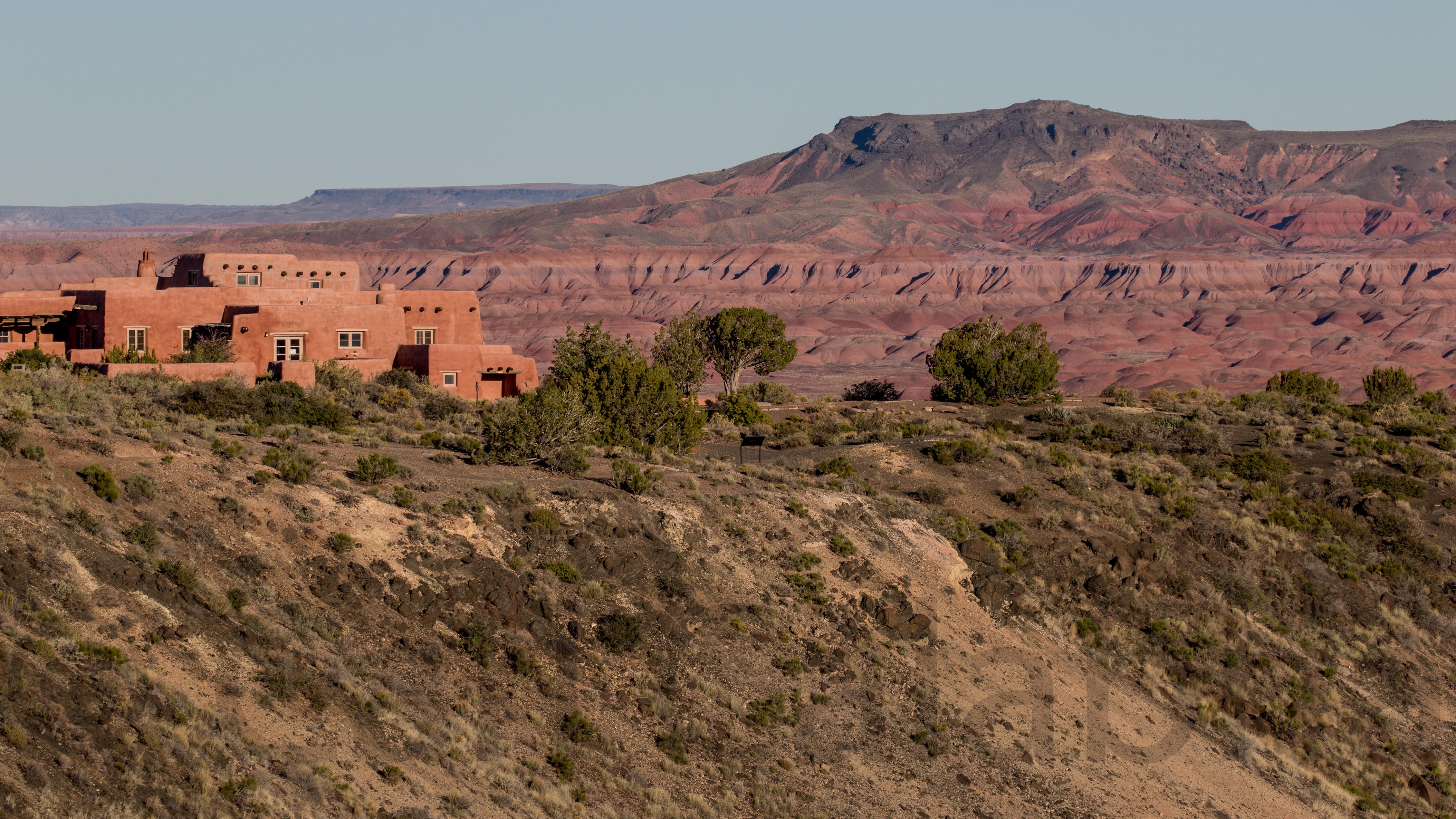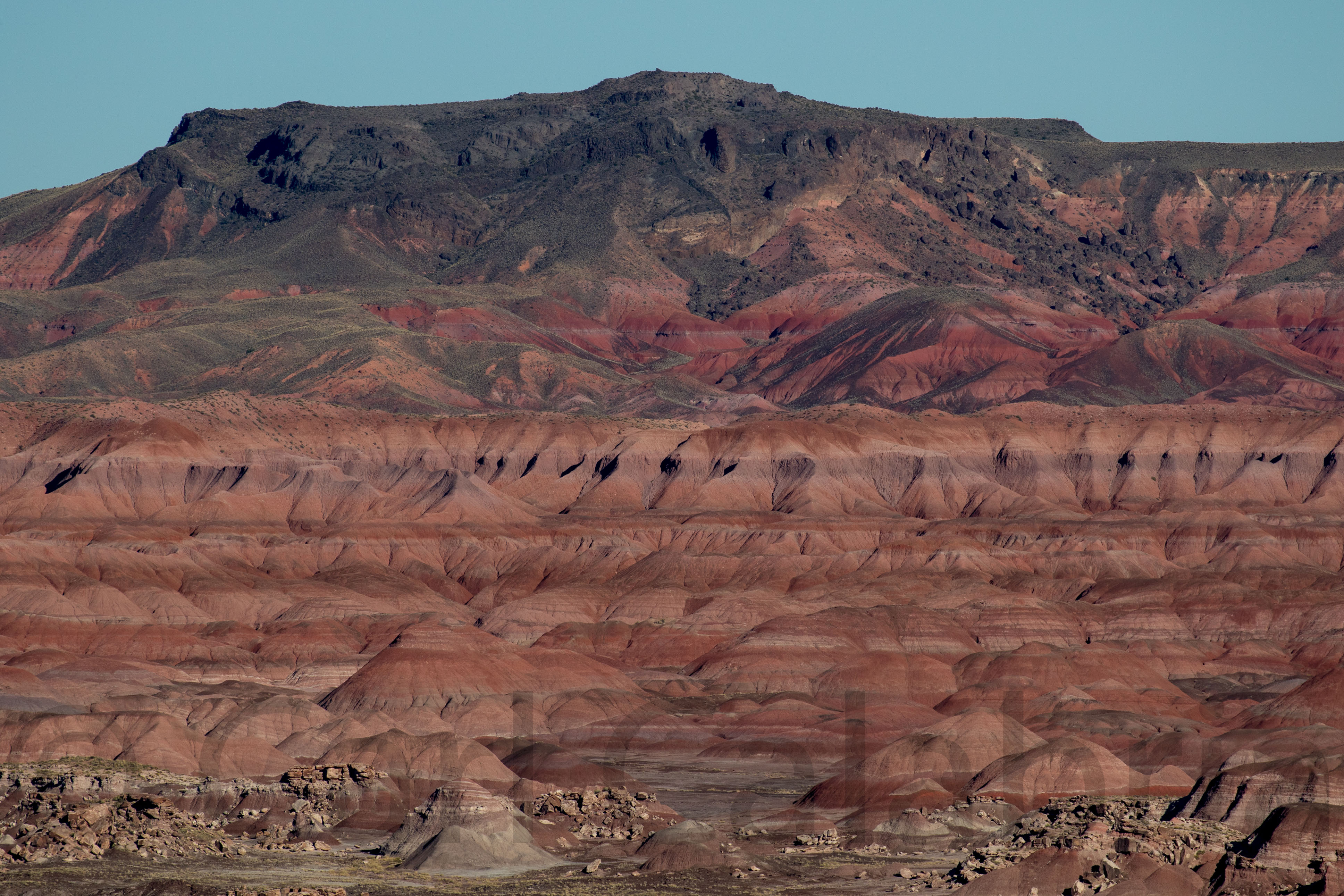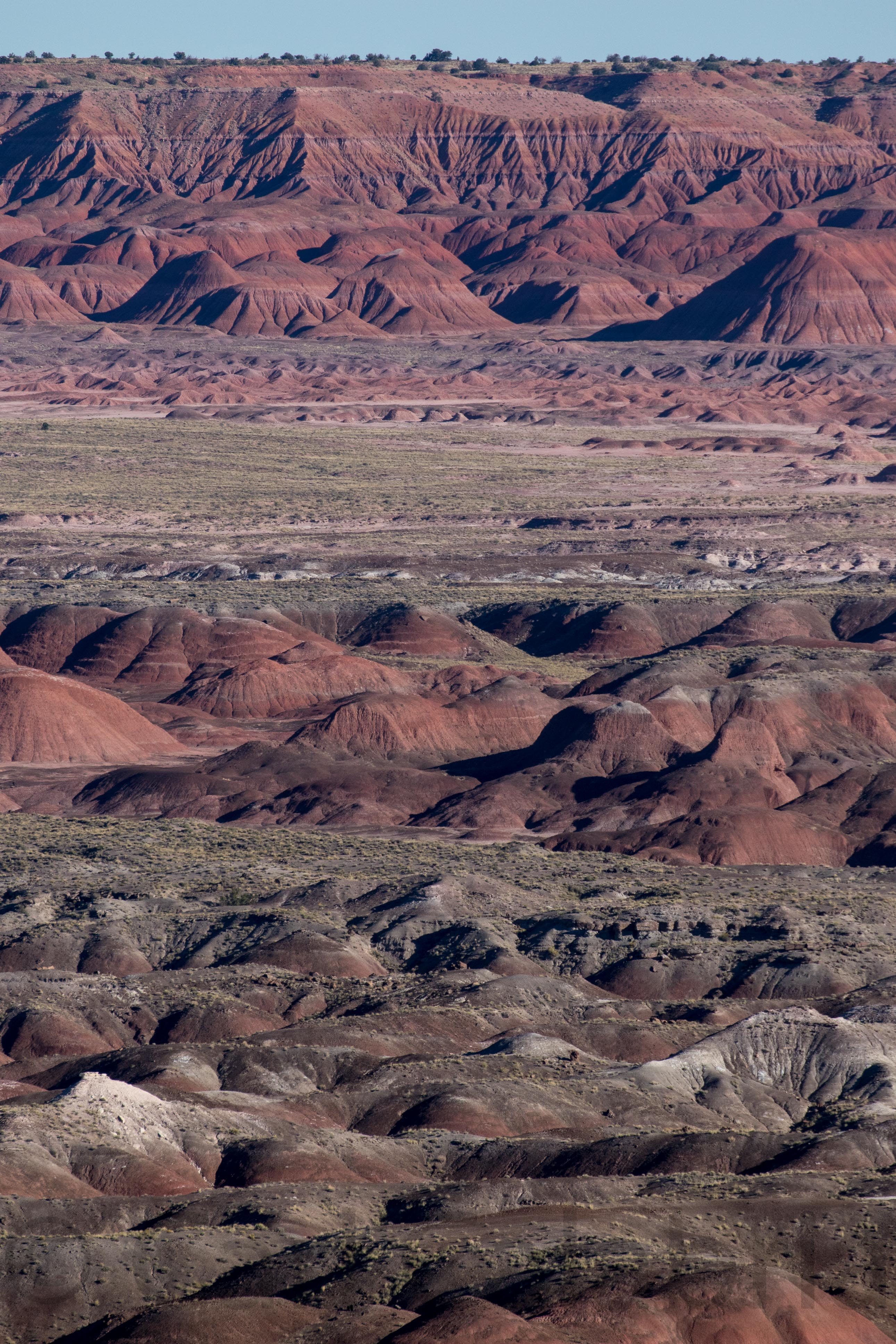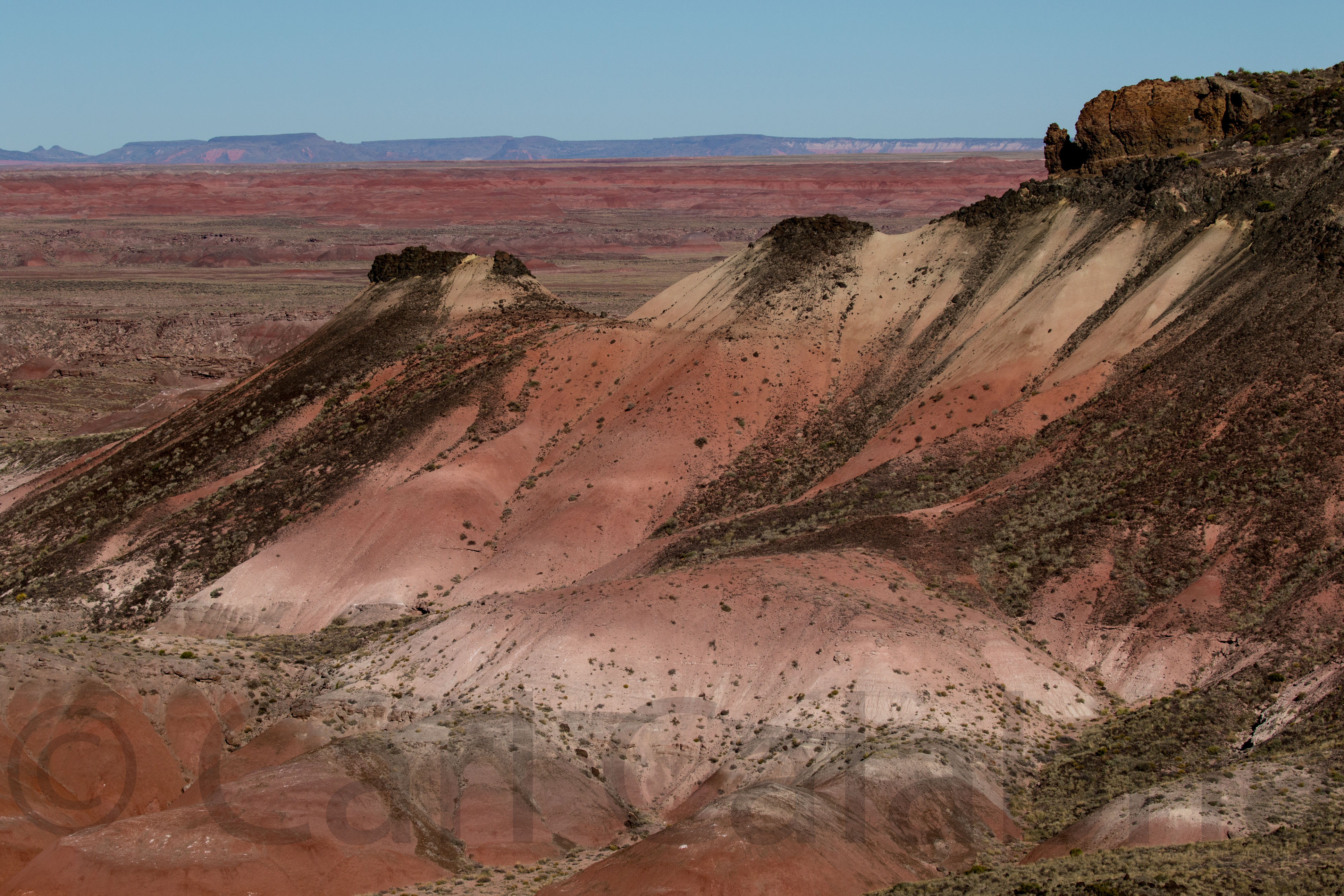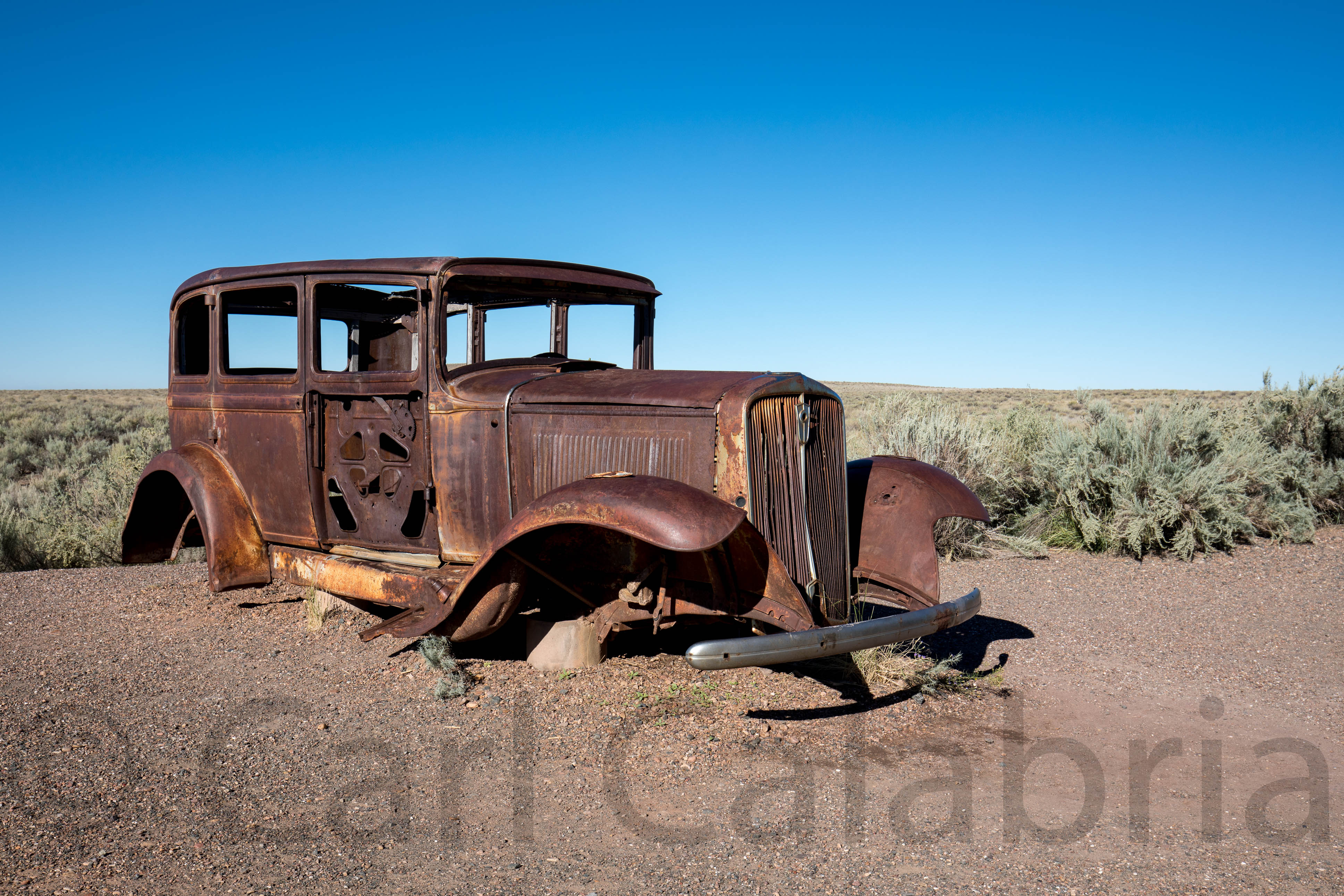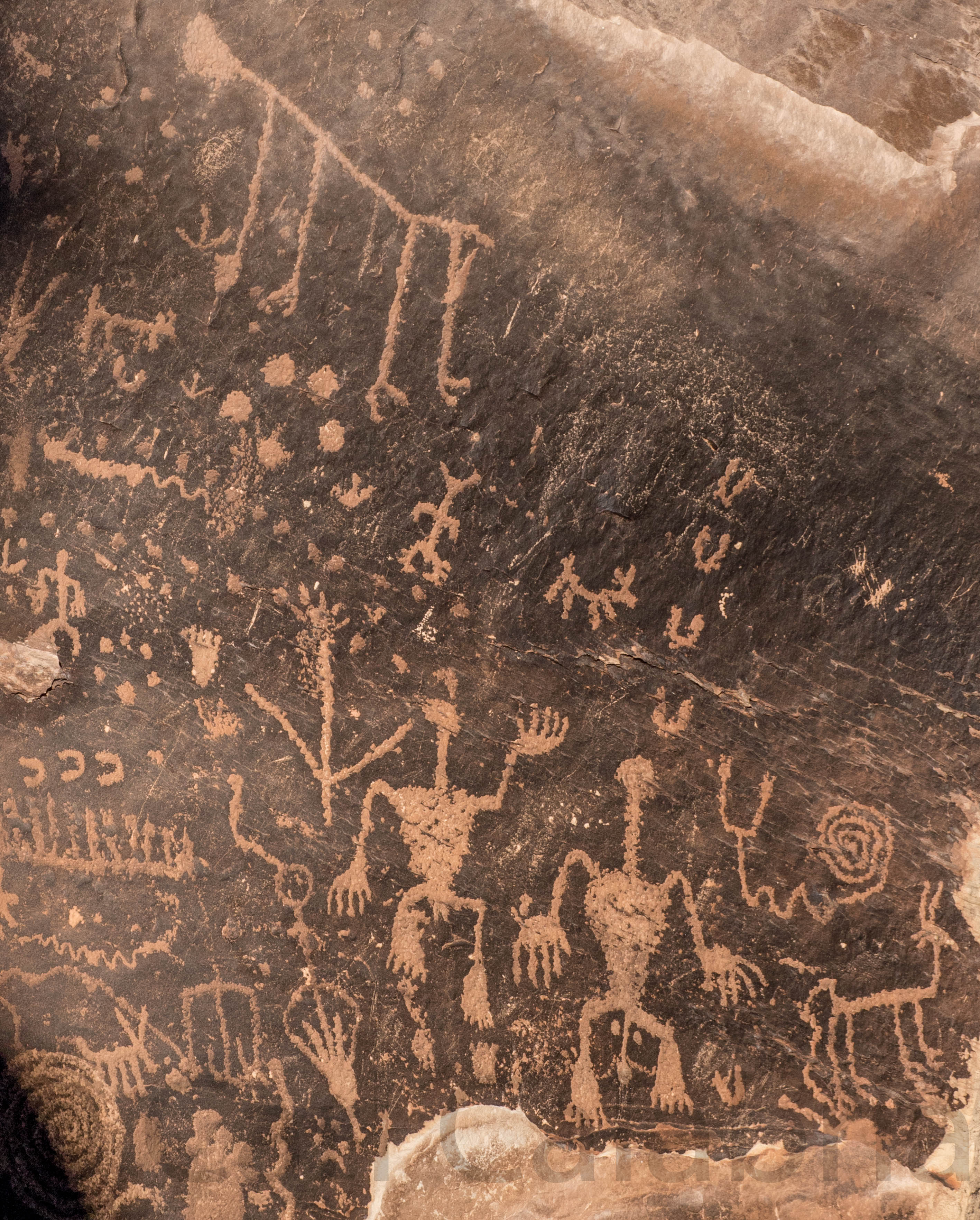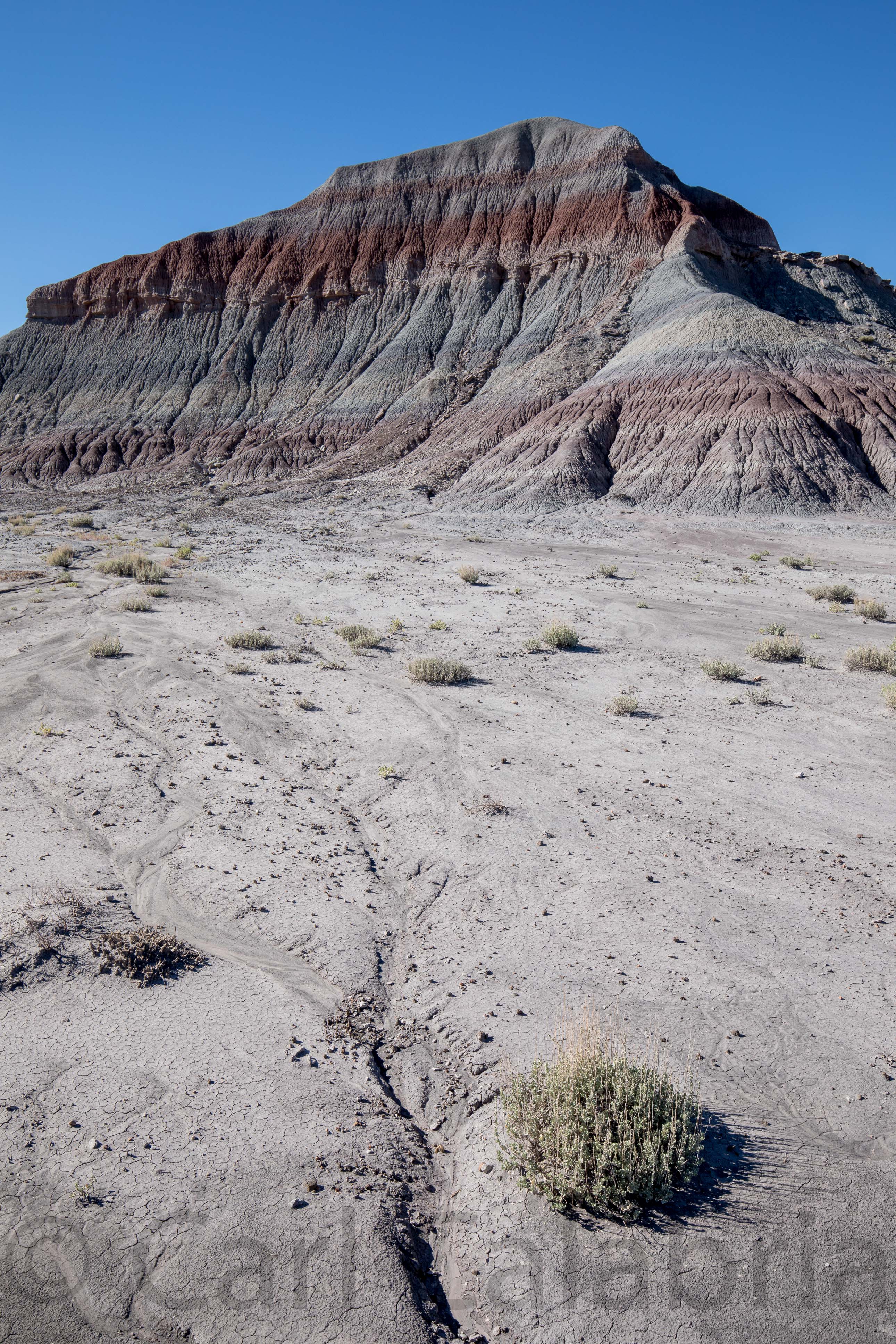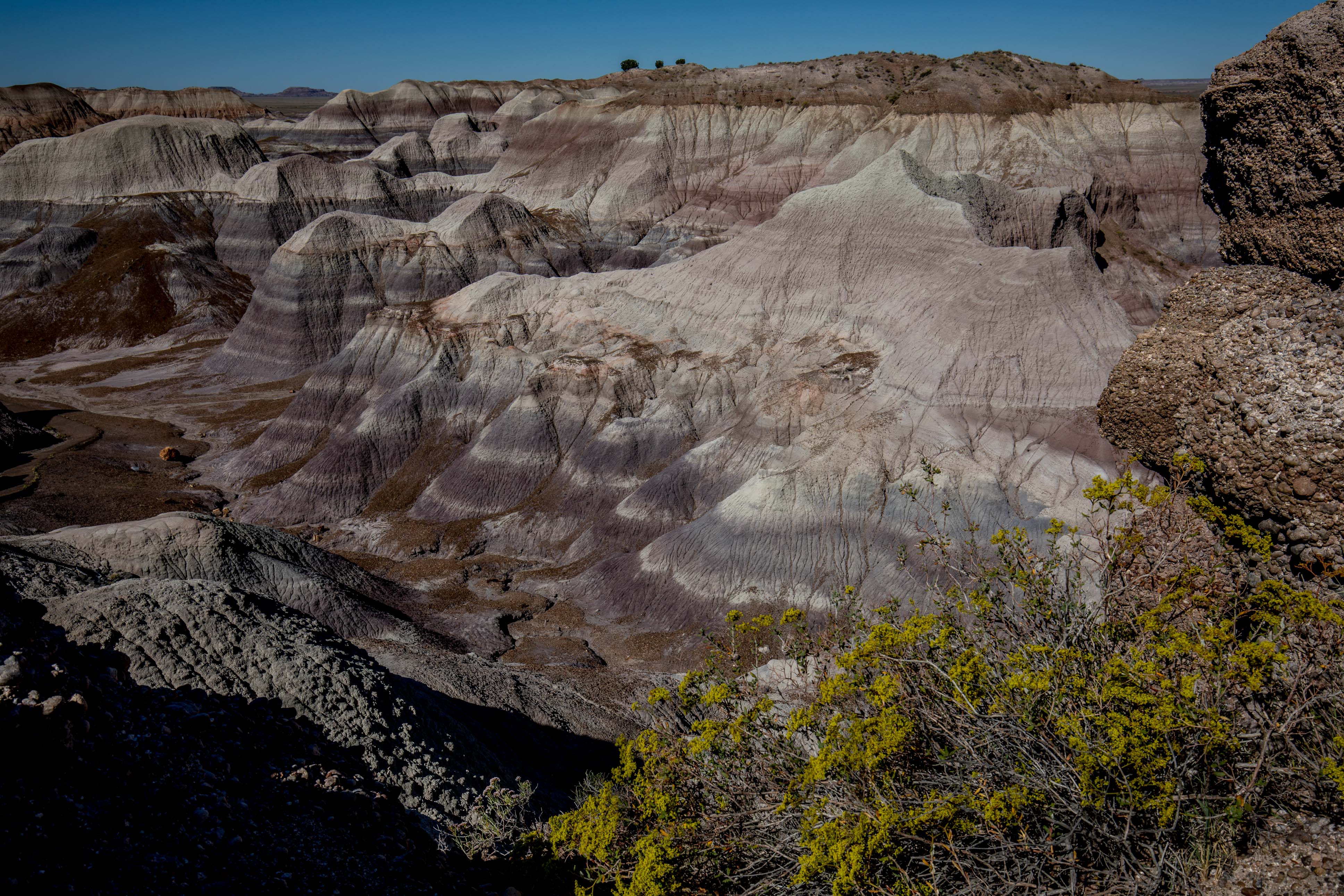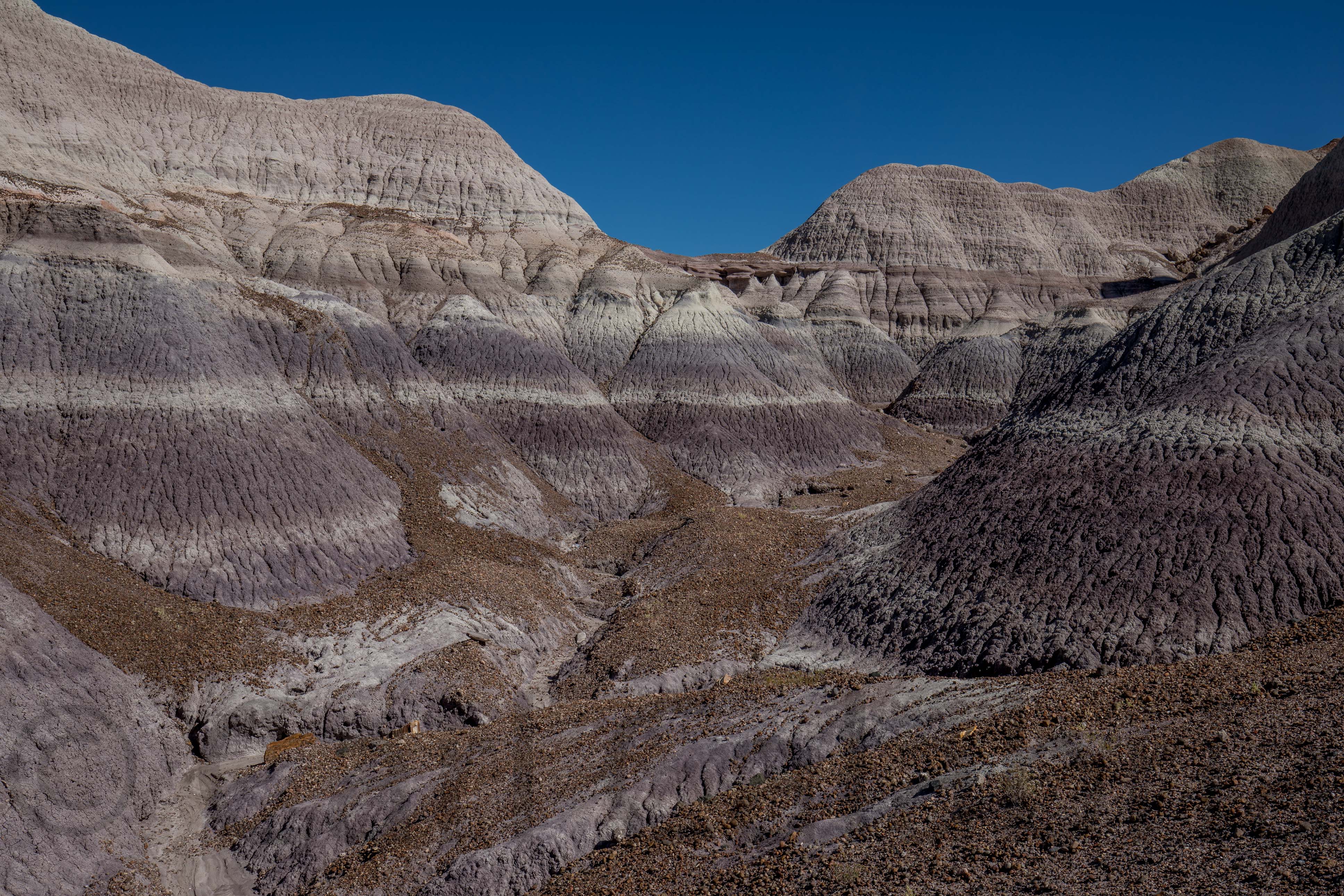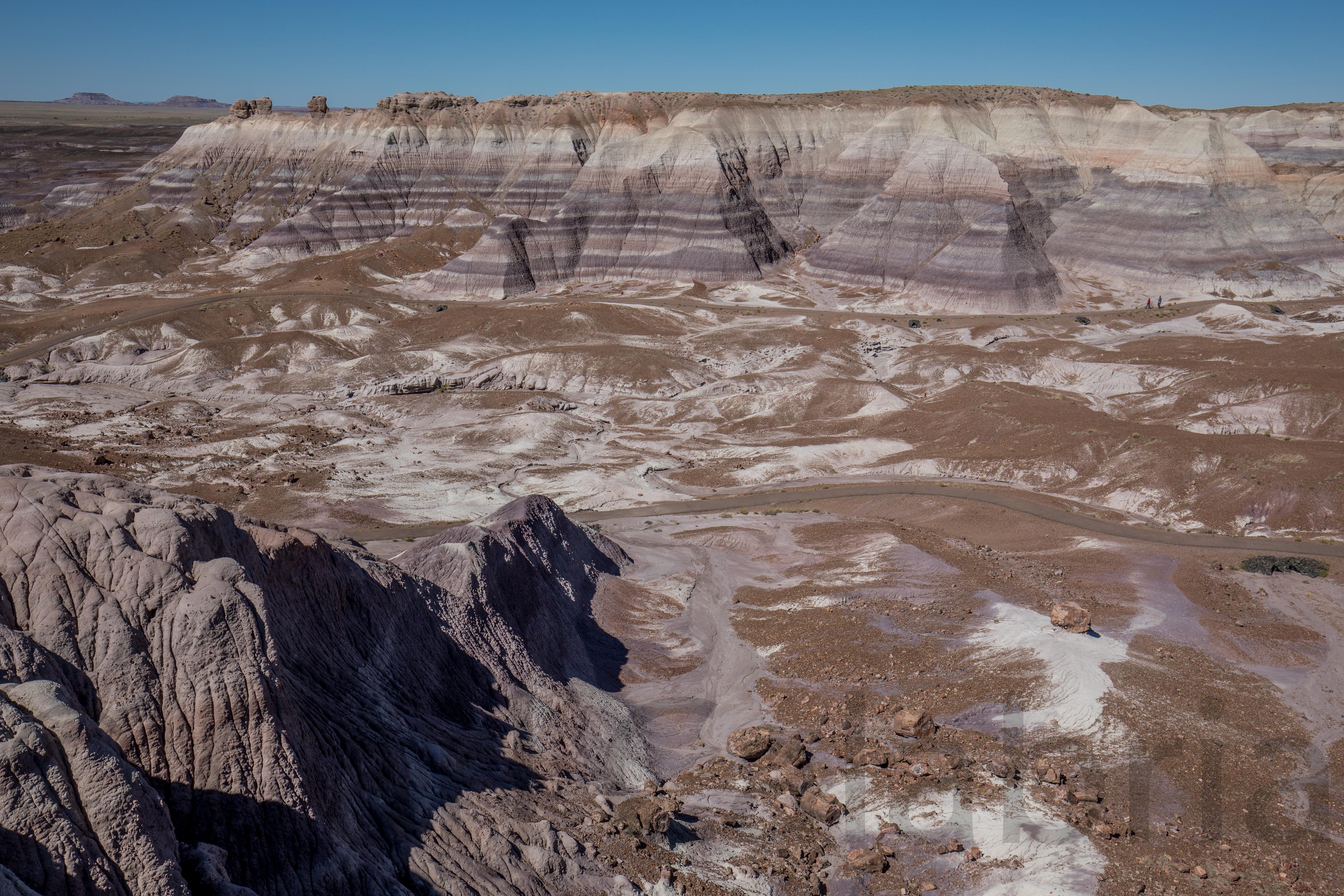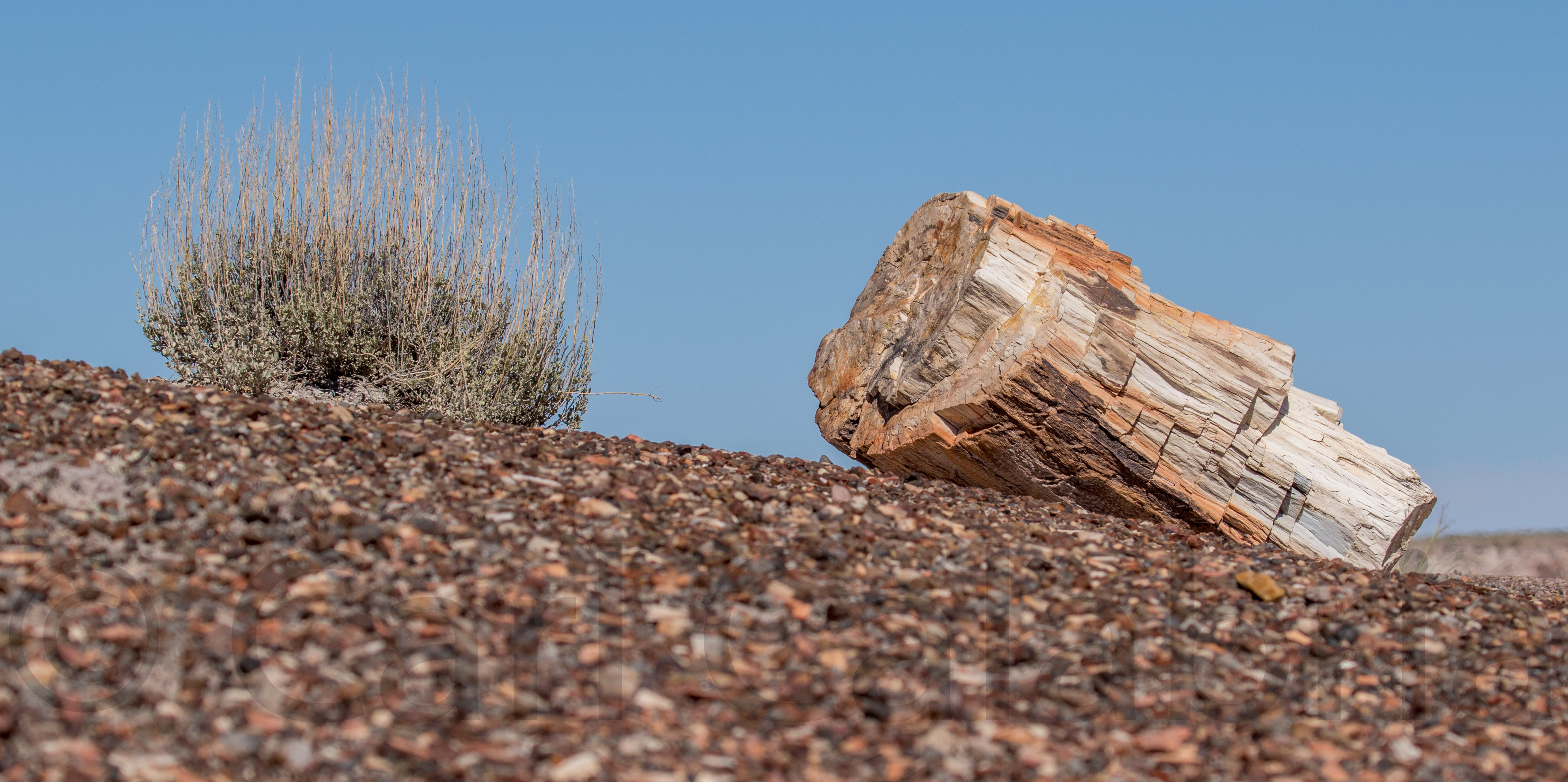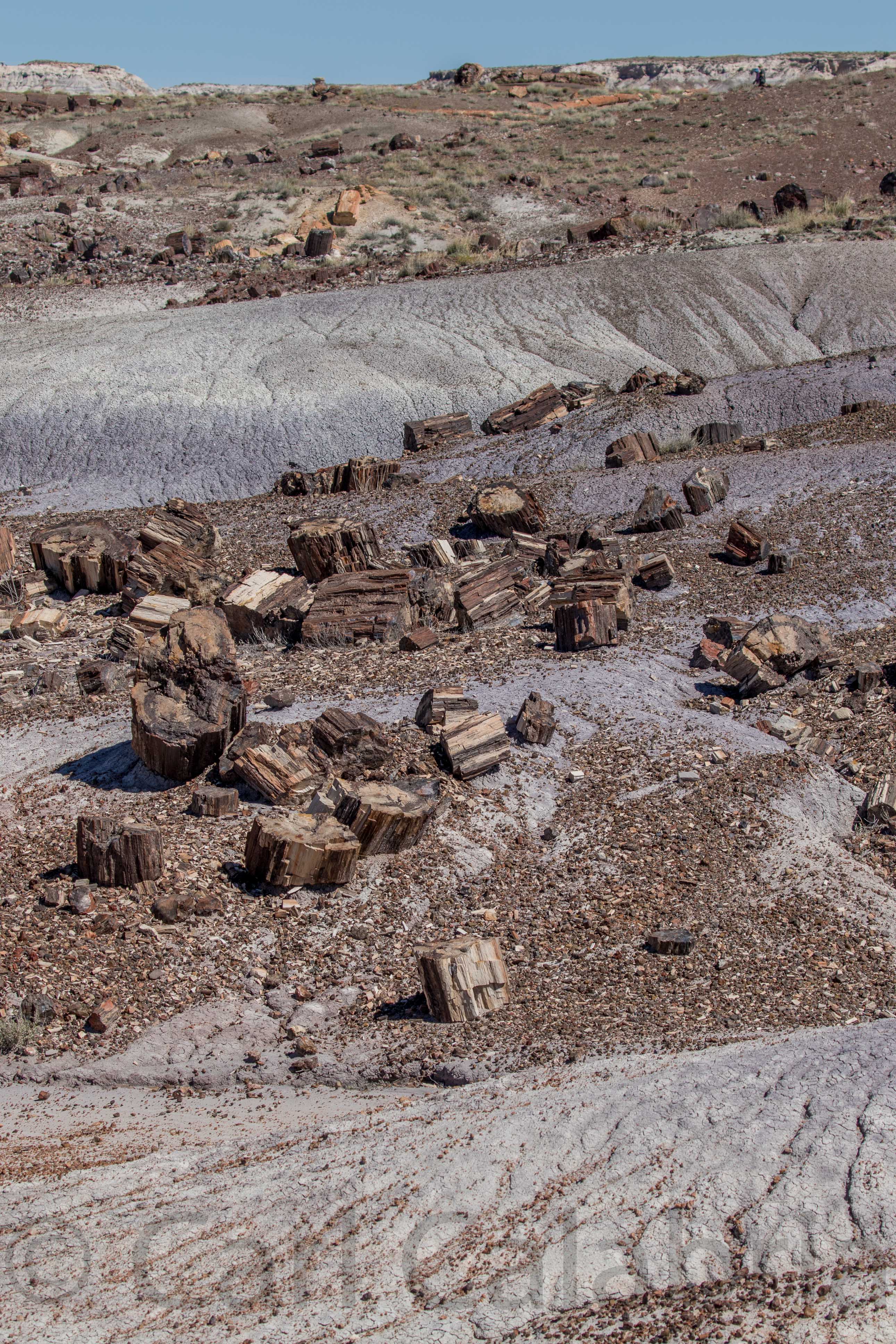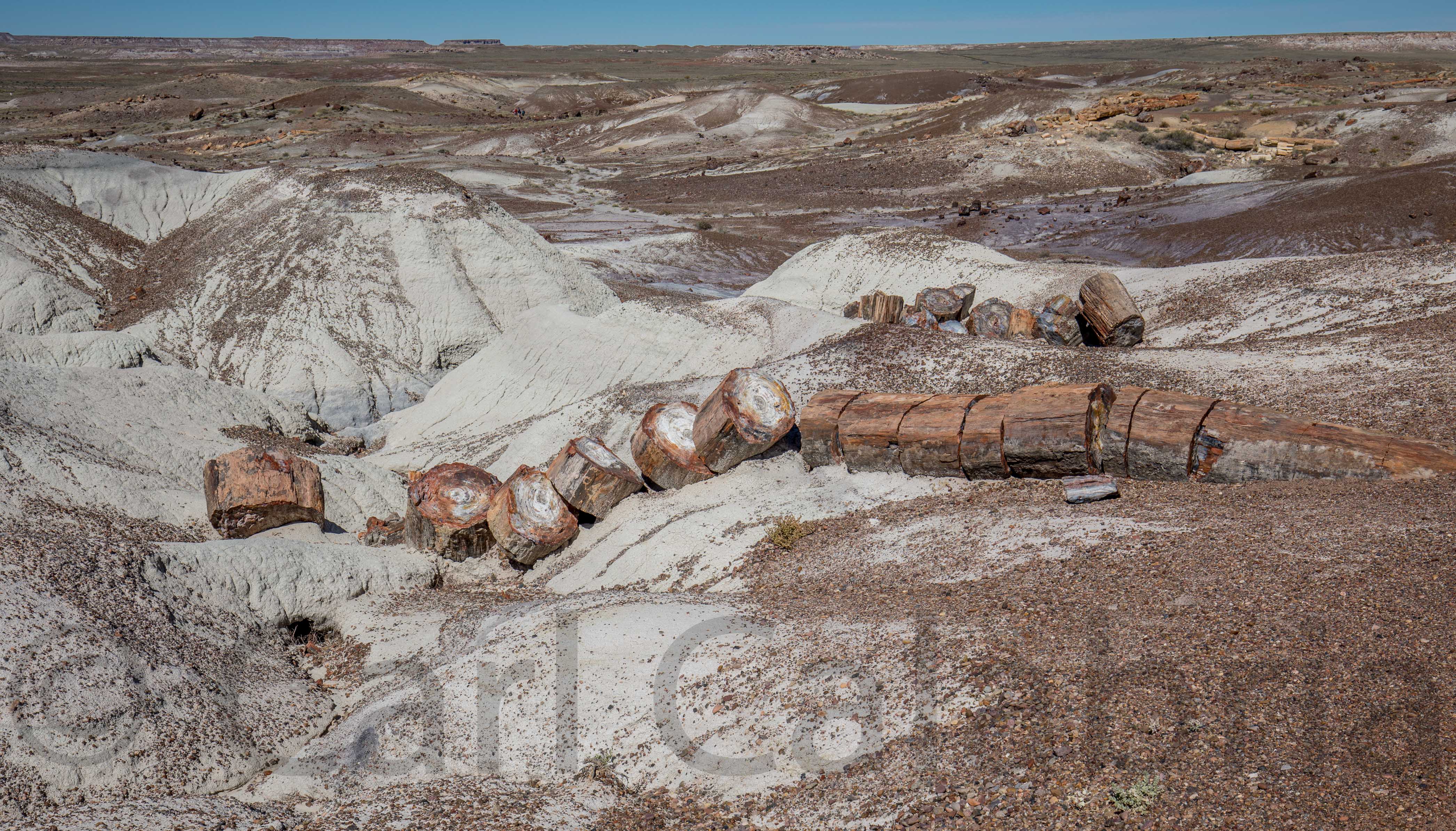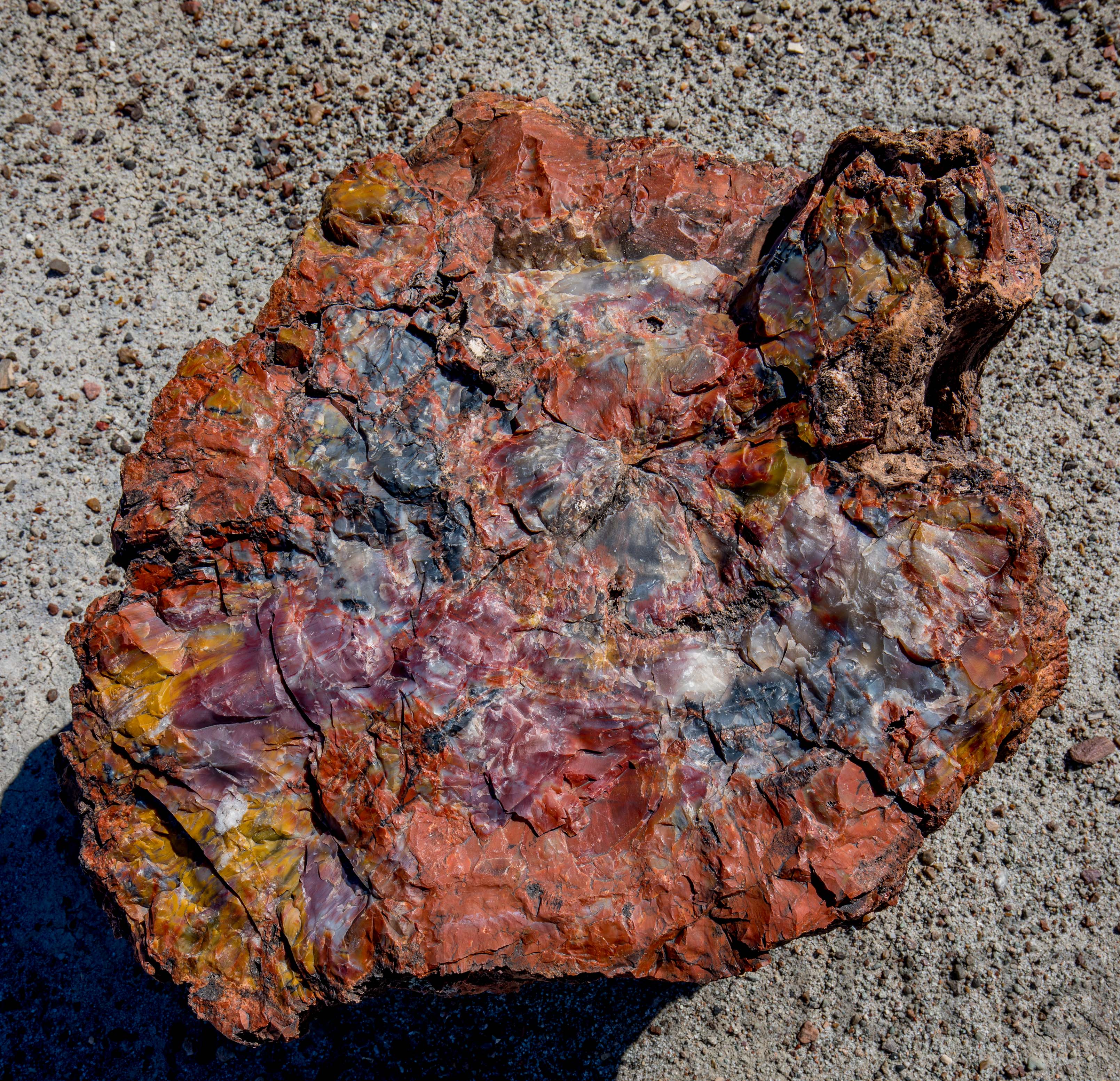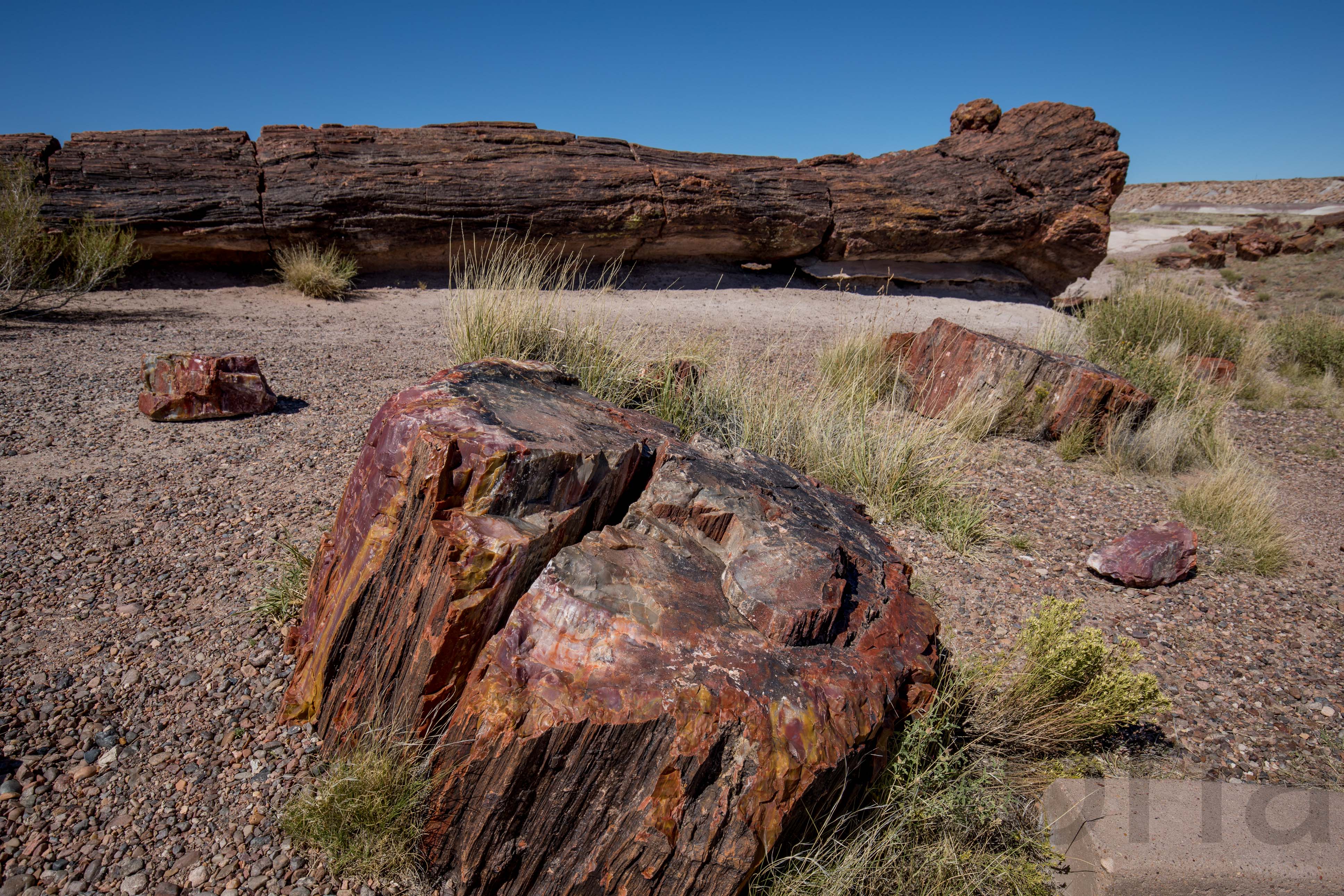The Painted Desert was aptly named by explorer Francisco Vázquez de Coronado in 1540. Now a part of the Petrified Forest National Park it is a photographer’s dream. I have often admired this area from 30,000 feet while flying over and was thrilled to have a closer look today.
Famous US Route 66 used to traverse the park and is now commemorated with the exhibit shown below. At many sites within the park, petroglyphs have been scratched, pecked, carved, or incised on rock surfaces, often on a patina known as desert varnish. Most of the petroglyphs in Petrified Forest National Park are thought to be between 650 and 2,000 years old.
The Petrified Forest is known for its fossils, especially fallen trees that lived in the late Triassic period, about 225 million years ago. Despite looking so natural, these tree sections are now composed exclusively of rock-hard minerals. As nightfall approached, I found myself passing Biosphere 2, the largest closed ecological system ever created. Used only twice for its original intended purposes as a closed-system experiment, both attempts, though heavily publicized, ran into problems including low amounts of food and oxygen, die-offs of many animal and plant species, squabbling among the resident scientists, and management issues. I was unable to gain access beyond the security gate and had to settle for sleeping in an adjacent cow pasture for the evening.

